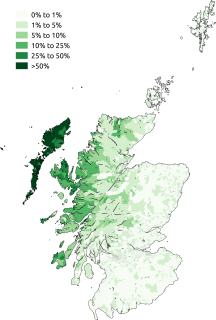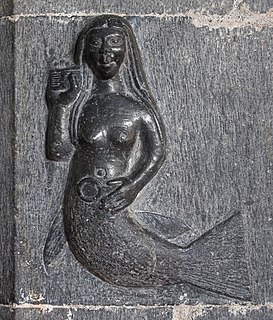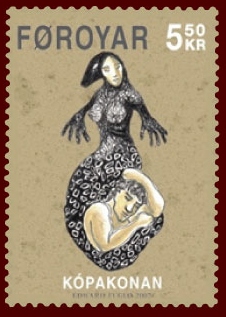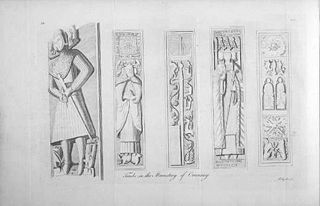The ceasg is a mermaid in Scottish folklore with the upper body of a beautiful woman merging with the tail of a grilse (a young salmon). [1] [2] She is also known in Scottish Gaelic as maighdean na tuinne ("maid of the wave") or maighdean mhara ("maid of the sea"). [2]

In folklore, a mermaid is an aquatic creature with the head and upper body of a female human and the tail of a fish. Mermaids appear in the folklore of many cultures worldwide, including the Near East, Europe, Asia, and Africa.
Scottish folklore encompasses the folklore of the Scottish people from their earliest records until today. Folklorists, both academic and amateur, have published a variety of works focused specifically on the area over the years.

Scottish Gaelic or Scots Gaelic, sometimes also referred to simply as Gaelic, is a Goidelic language of the Celtic and Indo-European language family, native to the Gaels of Scotland. As a Goidelic language, Scottish Gaelic, like Modern Irish and Manx, developed out of Middle Irish. It became a distinct spoken language sometime in the 13th century, although a common literary language was shared by Gaels in both Ireland and Scotland down to the 16th century. Most of modern Scotland was once Gaelic-speaking, as evidenced especially by Gaelic-language placenames.
The ceasg lives not only in the sea but also in rivers and streams, and can be made to grant three wishes to anyone who captures her. Marriages sometimes occur between ceasg and humans, and famous maritime pilots are often reputed to be descended from such unions. Even when these marriages end and the ceasg returns to the sea, they will always take an interest in their human descendants, protecting them in storms or guiding them to the best fishing grounds. [2]
The ceasg is sometimes imagined as something more monstrous. In some tales she swallows the hero and he remains alive in her stomach. The hero's wife plays a harp until the mermaid is charmed and the hero escapes. When the wife stops playing the mermaid swallows her, and the hero must consult a wizard for help. He is told that he must obtain a special egg that contains the mermaid's life force. He obtains the egg, rescues his wife, and kills the mermaid by crushing the egg. In these stories the hero had been promised to the mermaid before his birth. His father had been childless and the mermaid promised him sons on condition that the firstborn would be given to her. [2] [3] The Scottish folklorist Donald MacKenzie suggested that the ceasg may originally have been a sea goddess to whom human beings were sacrificed. [2]

The harp is a stringed musical instrument that has a number of individual strings running at an angle to its soundboard; the strings are plucked with the fingers. Harps have been known since antiquity in Asia, Africa and Europe, dating back at least as early as 3500 BC. The instrument had great popularity in Europe during the Middle Ages and Renaissance, where it evolved into a wide range of variants with new technologies, and was disseminated to Europe's colonies, finding particular popularity in Latin America. Although some ancient members of the harp family died out in the Near East and South Asia, descendants of early harps are still played in Myanmar and parts of Africa, and other defunct variants in Europe and Asia have been utilized by musicians in the modern era.
Cunning folk, also known as folk healers, are practitioners of folk medicine, folk magic, and divination within the context of the various traditions of folklore in Christian Europe.
The term "energy" is used by writers and practitioners of various esoteric forms of spirituality and alternative medicine to refer to a variety of claimed experiences and phenomena that defy measurement and thus can be distinguished from the scientific form of energy. There is no scientific evidence for the existence of such energy.













